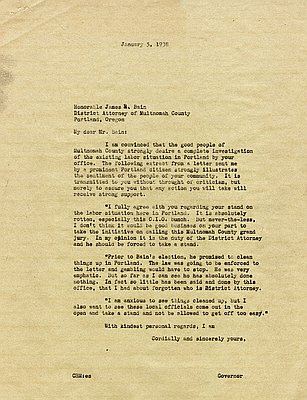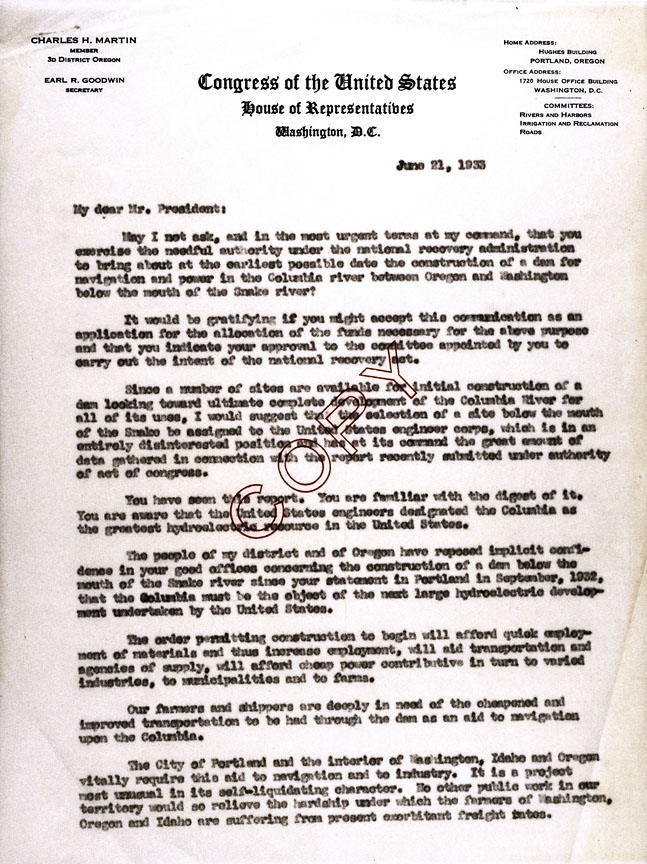- Catalog No. —
- Mss 1153
- Date —
- 1933
- Era —
- 1921-1949 (Great Depression and World War II)
- Themes —
- Environment and Natural Resources, Government, Law, and Politics, Trade, Business, Industry, and the Economy
- Credits —
- Oregon Historical Society
- Regions —
- Columbia River
- Author —
- Congressman Charles Martin
Congressman Martin to Pres. Franklin Roosevelt
Although Oregon Governor Charles Henry Martin (1935-1939) is best known for his role as a staunch anti-labor and anti-unionist, he also played a fundamental role in assuring funding for the construction of the Bonneville Dam along the Columbia River.
In this letter written by Martin to President Franklin D. Roosevelt, the Oregon politician encouraged the President to construct a massive dam along the Columbia River. During that same year, President Roosevelt, under the National Recovery Act (NRA), granted four billion dollars for the construction of public projects across the nation. The President hoped to stimulate the depressed national economy with projects that would “interweave natural resources with industry, labor, finance, agriculture, homes, recreation, and good citizenship.” Fearing the President would dismiss the Pacific Northwest as a site for the NRA dam project, and uneasy about the plight of Oregon farmers and laborers who suffered from the affects of the Great Depression, Martin wrote letters and even traveled to Washington D.C. to encourage the President to grant funding, and the manpower, necessary for building the Bonneville Dam. When Martin gained the President’s approval the following year he stated proudly, “By this act you will harness the Columbia and give us unlimited supply of the cheapest power in the country, you will rebuild the Northwest.”
Further Reading:
Murrell, Gary. “Hunting Reds in Oregon, 1936-1939.” Oregon Historical Quarterly 100, 1999: 374-401.
Cherny, Robert W. “The Making of a Labor Radical: Harry Bridges, 1901-1934.” Pacific Historical Review 64, 1995: 363-388.
Written by Kathy Tucker, Oregon Historical Society, 2002.
Related Historical Records
-
From Governor Charles Martin to James Bain
This letter from Oregon Governor Charles H. Martin to James R. Bain refers to a contentious dispute between competing labor unions and business owners that affected lumber-mill workers …

-
Letter from Pres. Roosevelt to Albert Bauer, 1944
This letter, signed by Pres. Franklin Roosevelt and addressed to Albert Bauer, was found in the Oregon Shipbuilding Corporation photographic collection in the S.S. Nehalem album folder. The …

